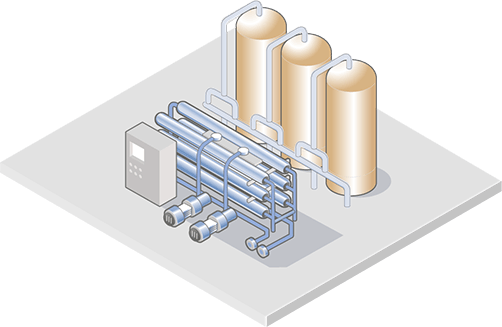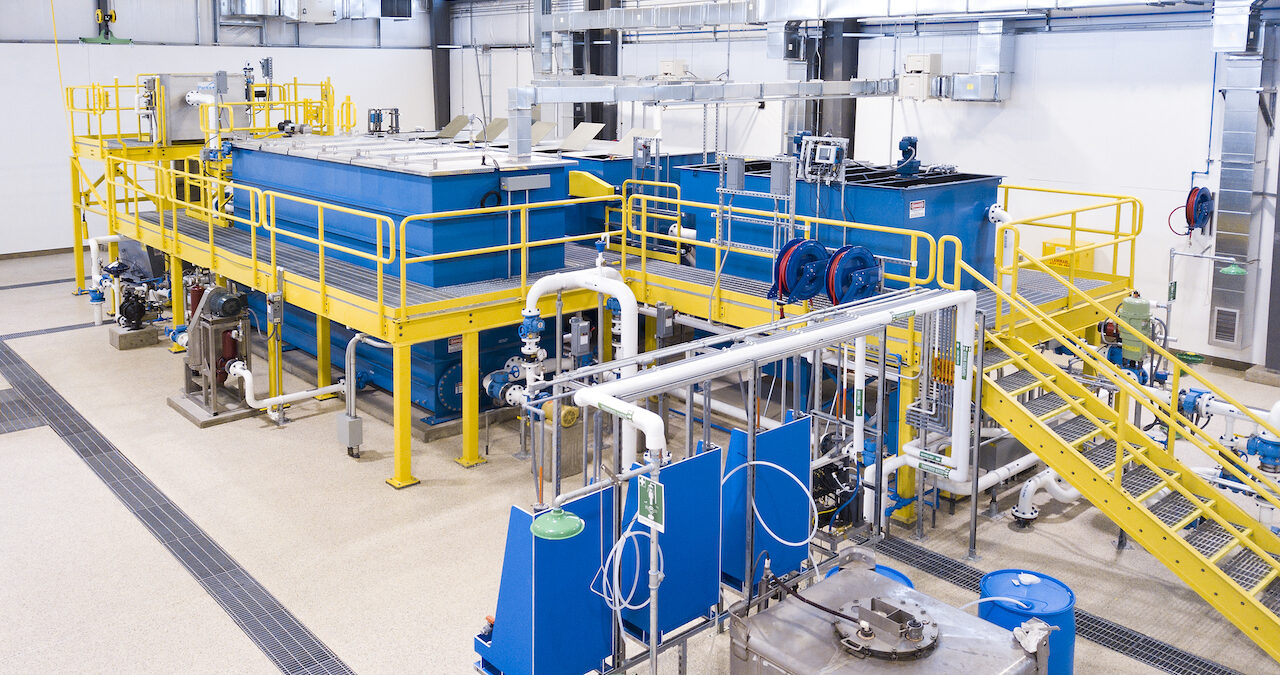Industrial Waste Water Treatment-- Customized Solutions for Effective Wastewater Treatment
Trick Techniques in Hazardous Waste Water Treatment Processes
The treatment of industrial wastewater is a vital element of ecological monitoring, entailing an array of strategies designed to reduce the effect of impurities. Advancements in technologies such as membrane filtering and advanced oxidation processes provide ingenious services for improving treatment effectiveness.
Physical Treatment Approaches
Exactly how properly can physical treatment techniques attend to the intricacies of commercial wastewater? Physical treatment approaches play a crucial duty in the initial phases of wastewater monitoring, concentrating mostly on the removal of solids and large particulates. Techniques such as sedimentation, flotation protection, and purification are important for decreasing the concentration of put on hold solids, consequently improving the efficiency of succeeding therapy processes.
Sedimentation involves the gravitational settling of solids, permitting for the splitting up of heavier products from the wastewater. This method is particularly effective in making clear water prior to chemical or organic treatments. Purification, on the other hand, utilizes numerous media to catch particle matter, ensuring that smaller sized pollutants are gotten rid of. This method can be tailored to suit different kinds of industrial effluents, generating clearer effluent streams.
In addition, flotation approaches, which utilize air bubbles to raise suspended solids to the surface area for elimination, work in dealing with wastewater with high concentrations of fats, oils, and oils. Overall, physical therapy methods function as an important initial step in the comprehensive administration of commercial wastewater, guaranteeing that the lots on subsequent treatment phases is minimized and improving total treatment effectiveness.
Chemical Therapy Strategies
While physical therapy techniques prepared for reliable wastewater administration, chemical therapy methods are important for addressing the a lot more complex impurities typically found in commercial effluents. These methods use various chemical representatives to precipitate, reduce the effects of, or oxidize hazardous materials, guaranteeing an extra comprehensive elimination of pollutants.
One typical approach is coagulation and flocculation, where chemical coagulants such as aluminum sulfate or ferric chloride are contributed to promote the gathering of put on hold particles. This procedure enhances solid-liquid separation, lowering turbidity and improving water high quality. Additionally, neutralization procedures are used to adjust the pH of wastewater, utilizing bases or acids to neutralize acidic or alkaline streams, respectively.
Oxidation-reduction reactions play a critical duty in derogatory organic impurities and virus. Chemical oxidants like hydrogen, ozone, or chlorine peroxide are utilized to break down complicated natural substances, making them less damaging or extra biodegradable. Additionally, advanced oxidation processes (AOPs) integrate numerous oxidation strategies to boost toxin removal efficiency.
Biological Treatment Procedures
The effectiveness of wastewater therapy is significantly enhanced by biological therapy procedures, which harness the all-natural metabolic activities of bacteria to break down raw material and remove pollutants. Industrial Waste Water Treatment. These processes largely entail cardio and anaerobic digestion, each tailored for specific kinds of wastewater
Cardio therapy processes utilize oxygen to sustain microbial development, promoting the break down of organic toxins right into carbon dioxide and water. Common methods consist of triggered sludge systems, where aeration containers promote the mixing of wastewater with microorganisms, and trickling filters, which urge biofilm advancement on media surfaces.
Alternatively, anaerobic therapy processes occur in the absence of oxygen, learn the facts here now utilizing anaerobic germs to decompose raw material, leading to biogas manufacturing, an eco-friendly power resource. Anaerobic digesters are frequently used in commercial settings for this function, effectively decreasing the volume of sludge while creating useful biogas.
The selection of an organic treatment approach depends on wastewater features, treatment objectives, and regulative criteria. The combination of organic processes in wastewater therapy not only improves pollutant removal performance however additionally promotes sustainability by lessening chemical usage and sustaining source recuperation.
Advanced Oxidation Processes

Usual AOP techniques consist of Fenton's ozonation, reagent, and photocatalysis. Fenton's reagent, a mix of hydrogen peroxide and ferrous iron, catalyzes the formation of hydroxyl radicals, making it efficient for dealing with wastewater having phenolic compounds and other stubborn substances.
AOPs provide numerous benefits, consisting of Get More Information decreased sludge production and the capability to deal with wastewater with high focus of natural pollutants. The execution of AOPs calls for careful consideration of operational parameters and cost-effectiveness, ensuring that these advanced techniques are appropriately integrated right into existing wastewater therapy systems.
Membrane Layer Purification Technologies

Microfiltration works for getting rid of put on hold germs and solids, while ultrafiltration targets smaller sized natural particles and infections. Nanofiltration links the gap between ultrafiltration and reverse osmosis, properly eliminating natural substances and divalent ions. Reverse osmosis gives the highest degree of purification, used mainly for desalination and eliminating mono-valent ions.
Membrane layer innovations use countless benefits, consisting of reduced power usage contrasted to standard therapy approaches, modular style for scalability, and the capacity for water healing and reuse. Obstacles such as membrane layer fouling and the requirement for routine maintenance must be addressed to make certain system efficiency. Generally, membrane layer filtering technologies represent an essential part of contemporary industrial wastewater therapy approaches, advertising sustainability and resource preservation in water administration.
Final Thought
Finally, commercial wastewater therapy employs a varied range of methods, consisting of physical, chemical, biological, and advanced techniques. Each technique plays an important function in effectively dealing with different pollutants, boosting water high quality, and promoting source sustainability. The combination of these strategies promotes an extensive therapy method, ensuring that commercial effluents meet governing requirements while reducing ecological impact. Proceeded developments in these methodologies will better enhance the performance and efficiency of wastewater therapy processes in industrial setups.
The treatment of industrial wastewater is an essential aspect of environmental monitoring, involving a variety of strategies designed to alleviate the influence of contaminants.Just how efficiently can physical treatment methods deal with the complexities of commercial wastewater?Advanced oxidation procedures (AOPs) stand for a cutting-edge method in industrial wastewater treatment, created to properly weaken organic pollutants that are typically resistant to traditional therapy approaches (Industrial Waste Water Treatment).In verdict, industrial wastewater treatment utilizes a varied selection of techniques, including physical, chemical, biological, and advanced approaches. Proceeded advancements in these methodologies will further improve the performance and performance of wastewater therapy procedures in commercial settings